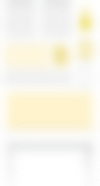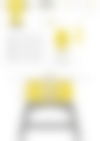6 October 2016
How to Make a Custom Desktop
Grovemade CEO & Co-founder Ken Tomita recently reset his home office space, making a simple but effective desktop to fit into a tight corner. See his process in the video below, or make your own with the simple instructions that follow.
In the spirit of our Reset The Desk event, here’s how I made a super-easy custom standing desk with a 1 ½” desktop using a few simple materials that you can buy online and at your local hardware store.
I purchased the standing desk base from Amazon. I chose a base with a white finish for the clean look, but you should choose whichever color that suits your space best!
I purchased the standing desk base from Amazon. I chose a base with a white finish for the clean look, but you should choose whichever color that suits your space best!
For the desktop, I opted for baltic birch plywood. I picked this plywood because it has a high quality lamination and is very strong and stable. The edges also have a really good layered profile. The face of the plywood could be better, but it doesn’t matter for our application because we’ll be painting it.
If you don’t have access to the tools used below, don’t have the time, or want to save a few bucks, you can get a simple tabletop from Ikea for less than ten bucks.
If you don’t have access to the tools used below, don’t have the time, or want to save a few bucks, you can get a simple tabletop from Ikea for less than ten bucks.
Materials
(A) 2x Disposable Paint Tray Liners
(B) 1x Tube of Wood Glue
(C) 4x Foam Paint Roller Pads
(D) 1x Carton 150-Grit Sandpaper
(E) 1x Quart Oil-Based Primer
(F) 8 - 10x 1¼” drywall screws
(G) 1x Quart Oil-Based White Semi-Gloss Enamel Paint
(H) 1x ¾” Baltic Birch Plywood Sheet (60” x 60” or 48” x 96”)
(I) 1x Standing Desk Base
(A) 2x Disposable Paint Tray Liners
(B) 1x Tube of Wood Glue
(C) 4x Foam Paint Roller Pads
(D) 1x Carton 150-Grit Sandpaper
(E) 1x Quart Oil-Based Primer
(F) 8 - 10x 1¼” drywall screws
(G) 1x Quart Oil-Based White Semi-Gloss Enamel Paint
(H) 1x ¾” Baltic Birch Plywood Sheet (60” x 60” or 48” x 96”)
(I) 1x Standing Desk Base

Tools
(1) Impact Driver
(2) Sanding Block
(3) 45-Degree Chamfer Bit w/ Bearing
(4) Paint Roller
(5) Paint Tray
(6) Palm Router
(7) Table Saw
(1) Impact Driver
(2) Sanding Block
(3) 45-Degree Chamfer Bit w/ Bearing
(4) Paint Roller
(5) Paint Tray
(6) Palm Router
(7) Table Saw


With the tablesaw, cut the plywood sheet in half. Measure the desktop size you want, leaving ½” of overcut, then cut to size. If you don’t have a tablesaw at your disposal, the lumber department at your hardware store can cut your plywood to size for a fee.

Next, drill pilot holes on just one of the plywood sheets. Space the holes about one every foot and 4 or 5 inches from the edge of the desktop. These don’t need to be perfectly spaced, as they’ll be on the underside of the desktop.

On the other sheet of plywood without the pilot holes, drizzle a liberal amount of glue over the entire surface of the wood. Place the sheet with the pilot holes on top and align the two pieces.

While the glue is still wet, drill your countersunk drywall screws into the pilot holes with the impact driver. Drive the screws in so that it sucks the two pieces together. Wipe off excess glue and leave it to dry for at least two hours.

Once the glue has set, it’s back to the table saw to cut to your final dimensions, removing the ½” overcut, and leaving everything nice and flush.

Next is to prime. (The oil-based primer is a little noxious, so make sure you have a window open and a fan blowing.) Apply primer evenly over the surface of the desktop without the screws showing, and be sure to follow the dry time instruction on the can.
Once the primer is dry, mix and pour enamel paint into a fresh pan liner. With a clean foam roller, apply at least two coats, allowing paint to dry completely between coats.
Once the primer is dry, mix and pour enamel paint into a fresh pan liner. With a clean foam roller, apply at least two coats, allowing paint to dry completely between coats.

This is the trickiest part, so you may want to practice on a piece of scrap wood. It’s also completely optional, but the chamfered edge gives the desktop a bit of added depth.
Fit your palm router with the 45-degree chamfer bit and bearing. Adjust the router height to the size of chamfer you want. Moving left to right, cut your chamfer.
Fit your palm router with the 45-degree chamfer bit and bearing. Adjust the router height to the size of chamfer you want. Moving left to right, cut your chamfer.

With 150-grit sandpaper and a sanding block, sand the edges of the exposed wood until it is nice and smooth. This will take a little elbow grease but will be worth it.

Mount your desktop to the desk base with the included screws following the instructions provided with it.
That’s it! Done!
That’s it! Done!













